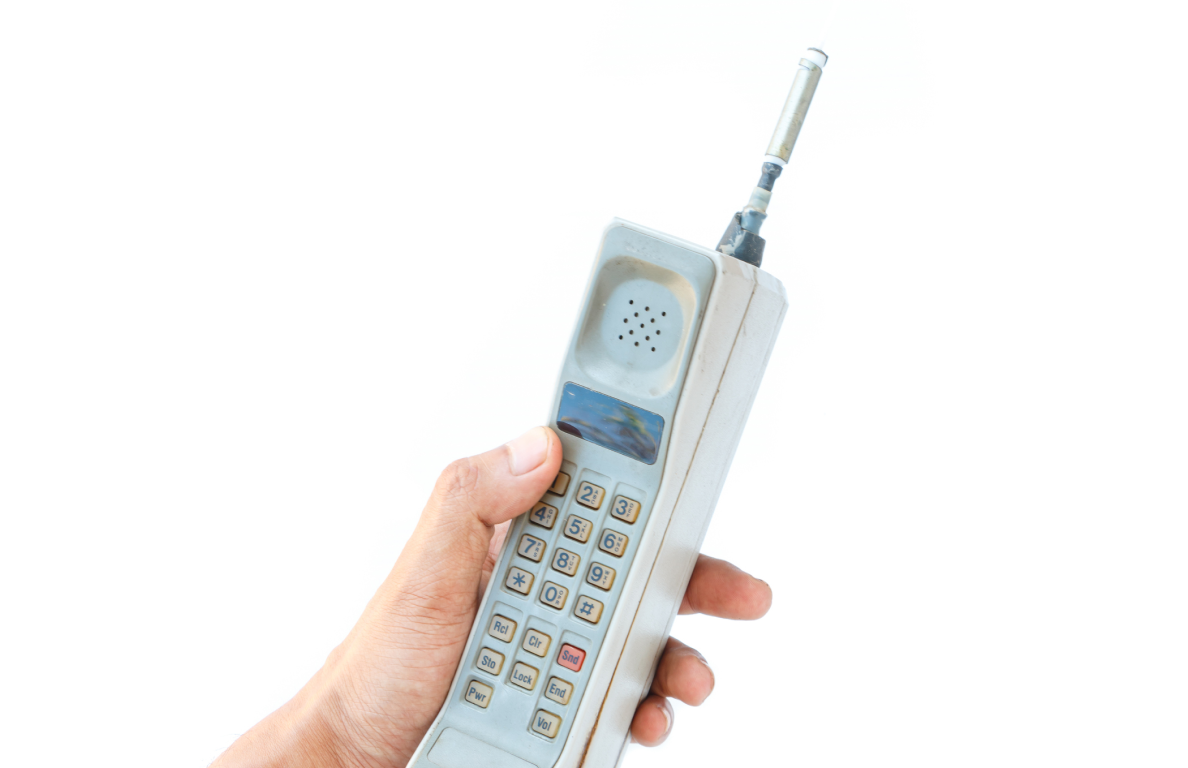We all have them – those lines or phrases or scenes from a favourite movie or TV show that stick with us and find their way into our thoughts and conversations more than we might have predicted. It’s the stories that often go something like ’Do you remember that time on SNL when Chris Farley interviewed Paul McCartney. That was awesome.’
Enjoy this featured INCITE audio article during the next commercial break.
Sometimes the recollections are witty; sometimes they bring a warm sense of nostalgia; and sometimes they are subtly infused into a chat. But in the company of the right person, they trigger a good belly laugh and a nod of appreciation.
I have them, too. Oddly for me, the one that keeps coming to mind happens to be from a commercial.
It was the mid-90s and light beer had just taken over as the most popular beer in America – but not in Canada. Our beer palettes were more refined and light beer tasted more like, well, water. So along comes a young Tom Cavanagh in a Blue Light commercial pitching its depth of flavour. We see scenes of Tom next to Niagara Falls talking about how it reminds him of light beer. The virtue of Blue Light is that it tastes like beer because “If I wanted water, I would ask for water.”
I don’t know why that line stuck. Maybe Tom reminded me of an uncle I loved, but rarely got to see. But I think it was the line’s simplicity that resonated. I didn’t have the marketing language at the time to fully articulate or appreciate the layered insight that led to that copy, but this idea that sometimes people just know what they want is something we, as direct marketers, can forget. But let’s park that for a minute and come back to it.
Over the rest of this article, my goal is to share a few more examples of 90’s TV and highlight how they might help shape a modern-day view of CRM and personalization.
Lesson 1: ‘Homer’
While we are currently into season 34 of The Simpsons, this lesson harkens back to season 1, episode 9. It is Marge’s birthday and Homer buys her a gift – a bowling ball with his name on it. There is so much that is wrong with that, but let’s look at it through the lens of personalization.
This was the early 90s. We still called email ‘electronic mail’. Direct mail ruled the day and first name personalization was really as good as it got. So, branding a bowling ball with a first name as a gift wasn’t half bad; it was just the wrong name and the wrong gift.
The lesson to be had here is less about the use of personalization and more about use of data to arrive at the personalization strategy. Homer didn’t do his homework to find out what Marge wanted for her birthday. He never observed. He never stowed away mental notes. He never asked. The right question with the right way to capture the answer would have made all the difference.
The personalization takeaway: There are moments in any relationship, brand-consumer included, where the focus should be about what they want, not what you want.
Lesson 2: Moviefone
Seinfeld happened to be my favourite show of the 90s. I’m not alone and I am continually amazed at how quoted this show still is. This lesson references season 7, episode 8. The story involves Kramer, one of the main characters, eccentric in his taste, candid-yet-caring in his demeanor and arguably the best idea guy of the bunch. Kramer gets a new phone number, and it is one digit different from Moviefone (an automated attendant designed to help people find movie locations and showtimes). So, when many people start calling Kramer looking for Moviefone, he starts to take on the persona. One of those callers was George. ‘Using your touchtone keypad, please enter the first 3 letters of the movie title now.’ After listening to a couple of beeps and unsuccessfully trying to guess what movie George was searching for, he simply says, ‘Why don’t you just tell me the name of the movie you selected’ in his best automated assistant voice. It made me laugh, but there was also something so clever underneath it all.
The personalization takeaway: Sometimes the easiest way to get the information you need to make an experience easier and more personal, is simply to ask for it.
Lesson 3: Central Perk
What write up on 90’s TV would be complete without referencing one of the biggest shows ever, Friends. One of the main settings is a coffee shop called Central Perk. This is early days on friends – season 1, episode 3 – and we are just getting to know the 6 main characters. Rachel, who works at the coffee shop, is bringing drinks to Joey, Ross, Chandler and Monica. A decaf cappuccino for Joey. A coffee black to Ross. Latte for Chandler and an iced tea for Monica. “I’m getting pretty good at this,” says Rachel. As she turns around, the 4 exchange their drinks to the right person who actually ordered it. The laugh track kicks in. It’s funny because in some way or another, we’ve all been there – either as the one mistakenly remembering something about someone, or the recipient of the mistake.
The personalization takeaway: If you’re going to ask for something, be prepared to get it right when you use that information.
You might be thinking – this is a nice trip down memory lane, but what has that got to do with modern day direct marketing. For me, it has to do with the tension between innovation and intention. As the sophistication of the personalization tools and systems continues to develop rapidly, the intent of the connection that personalization is meant to produce gets easily blurred or missed. We look at the programs and not the people; personalization becomes artificial instead of artful.
My examples may have been a bit forced and overly basic. But they all hit on, what I think are, life experience truths. And really, it’s the insights into real life that made shows like these so poignant – and why we love them so much. As I re-watched those shows and commercials from 30 years ago, it struck me that the act of asking and responding to good questions is a universal truth in building relationships and maybe one we could be better at as we seek to build long-term relationships between brands and consumers.
Modern day implication 1: Zero-party data
As direct marketers, we are well versed in leveraging all sorts of data – third-party, first-party, structured, unstructured, etc. But over the last few years, there has been a growing push for more zero-party data. While effectively first-party data, zero-party data is more about asking people directly what they like, what they are looking for, what they prefer – and building communications, content, solutions around their responses.
It’s personalized, but it’s also personal. It’s dialogue. It’s relationship building. And it doesn’t have to be boring. It doesn’t have to look like long multiple-choice surveys but highly creative, engaging experiences.
Think of Sephora and their line-up of quizzes and how brilliantly they connect their Beauty Insider program to the quizzes and use that zero-party data to create highly individualized programs and content for you. The key here is to ask better questions, and to ask them better.
Modern day implication 2: AI as a solution provider
It’s not just about asking questions but being prepared to do something meaningful with the answers. Two quick examples to help frame this – both linked by a common question and solution.
Mercedes-Benz recently launched a vehicle that can alter the whole experience of the drive (lighting, scent, music) based on quick selection of a few choices geared around your mood. BMW, at this year’s CES, highlighted a colour-changing technology that, with 32 colours and 240 segments to choose from, means you have almost an infinite number of colour options for your car.
Think about this – you sit down at the wheel and your car asks you what kind of day you are having or how you are feeling? You voice a response and immediately, the exterior colour changes to reflect your upbeat or sombre mood, the lighting in the car adapts, the music selection is personalized and suddenly your drive has become an incredible personalized experience.
One question, but with the technological innovation to respond in real time in a relevant way, and you have a very personal solution.
Modern day implication 3: AI and empowering people to ask better questions
Microsoft recently launched an exploratory version of Bing powered by the OpenAI algorithms used in ChatGPT. There are 2 modes – 1 is more like traditional search, the other is more chat based. While there are kinks to work out, the latter is going to be a real game changer.
Search has been a foundational digital experience for awhile now, but it’s remained fairly static in how it operates. Sure, some of us are better at asking Google questions than others, but you don’t need to think too much about it. Enter AI and conversation mode. Suddenly, the way we ask questions is going to be exponentially more critical.
So, you have to ask – is your brand, or the brand you work on, helping people ask better questions and being present when they do? Or, on the other side, are you set up to adapt to the rapid change we are about to see in terms of how people ask questions and look for answers?
A final thought
Needless to say, we are on the cusp of a seismic shift in marketing technology – one that will require significant data and systems integration and innovation. But at the heart, it is still about seeking to understand people, how they think and how they wonder about the world.
Sometimes your consumers want unique and complex things.
Sometimes they just want water.
And sometimes the best way to know, is to ask.
For marketers, by marketers
There are always plenty of insights available for you – sign up to INCITE and receive 3 free print issues a year.
Sign up for INCITE


